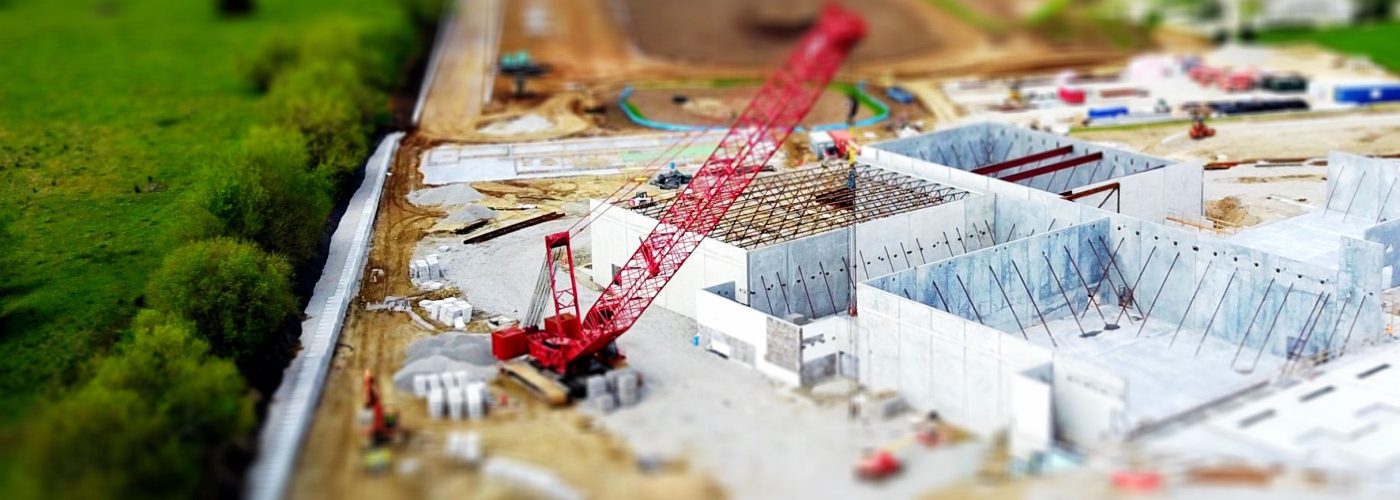From real-time 3D modelling to GPS tracking equipment and tools, construction sites are often hotbeds of the latest in cutting edge technology. Getting devices to talk to one another, on the other hand, can be a challenge. After all, plugging a laptop into a wall is tough when the wall hasn’t been built yet.
This presents a clear use case for wireless as the primary method of network connectivity in the industry, an area which is proving just as transformational as the physical devices it connects. From gigabit speeds over LTE to the millisecond latency of 5G, the power of the wireless WAN (WWAN) is allowing sites to achieve an ethernet-like quality of connection but without the need to lay a single cable.

How 5G is powering the construction site of tomorrow
5G is expected to provide 10 to 100 times faster speeds. It could also unlock 10 to 100 times more capacity than current long-term evolution (LTE) networks. This will give those working in construction almost instantaneous access to data-intensive edge and cloud applications, enabling multiple users to interact with each other in real-time, from anywhere in the world. Given that construction sites are complex and constantly-evolving environments, this will be a huge step forward.
With a higher data crunching capacity combined with more efficient connectivity channels through network slicing, 5G is also key to unlocking the power of massive machine-type communications in the construction industry. This technology will provide highly scalable and broad geographical coverage to help with complex construction and infrastructural projects such as smart cities, where the number of nodes will be considerably higher than on a normal project.
Looking further ahead, 5G will also prove key in accelerating the industry toward autonomous and remote operations – in other words, completing projects completely by machine alone, without the need of having people on site. Even though remote-control technology exists at present, 5G’s ultra low latency eliminates any delay in connectivity and ensure work is completed with adequate speed and precision. This could also unlock the capabilities of self-driving machines, which will be able to accurately map areas, recognise signals and communicate with other machines more efficiently.
Taylor Construction: a real-world example of 5G being put to the test in the construction industry[DR1]
A demonstration of the power of 5G in the transformation of the construction industry was recently brought to light in Australia, where one of the first real-world deployment of 5G connectivity was rolled out by visionary company Taylor Construction.
Driven by a need for more advanced and agile software platforms to power everything from blueprint design to site security, Taylor Construction noted that such applications require real-time data, which is only possible with immense bandwidth, low latency and constant uptime at the edge of the network with 5G.
Using an enterprise-grade WWAN edge solution provided by Cradlepoint, the company has successfully deployed a number of new onsite innovations powered by 5G:
- Holographic building visualisation – comprising mixed-reality smart glasses that Taylor’s employees and customers can wear on-site to render a virtual model of the building or elements of the construction process, such as holographic structural steel, framing, or electrical schematics.
- 360-degree 8K streaming and QR code scanning from wireless video cameras – enabling site workers to deploy digital induction tracking, which is said to improve risk management by automating the process of ensuring every person on-site has completed safety training.
- Internet of things (IoT) structural sensing – using smart sensors fixed to rebar and embedded in concrete aggregate to send data to the cloud where it can be subject to rapid and in-depth analysis. As a result, Taylor Construction can determine whether concrete is poured correctly and track any shifting of concrete over time.
- Real-time design displays – allowing staff on site to make changes to digital blueprints in real time on tablets and display on large monitors in trailers.
This case study shows that the future of enterprise-grade 5G has officially landed, both in the construction industry and beyond. With the connection quality and speed of fibre broadband, and the mobility and agility of wireless connectivity, it’s clear that the transformative power of 5G is already becoming a reality.
A platform for innovation
While 5G is making technological leaps forward at an accelerated rate, the construction industry is still only scratching at the surface of its full potential. Like the innovations which were helped along by the power of 4G LTE, we won’t know how 5G will manifest in exciting new use cases in the future. But what we do know, is that this future is bright.
It’s clear that 5G will improve productivity, safety and compliance for construction and engineering. But this is by no means the end-goal. Instead, 5G will be a catalyst of continuous improvement and innovation, helping to accelerate firms in the construction industry and beyond toward the use cases of tomorrow.
Taylor Construction’s 5G implementation:





